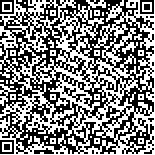|

二维码(扫一下试试看!) |
| The Obstacle Mechanism of Fiber Hydrolysis Saccharification during Pressing and Drying Process |
| |
| DOI: |
| Key Words:plant fiber; XRD; FT-IR; hydrogen bonding; fitting process |
| Fund Project:广东省科技计划项目资助(2010B010900026);中央高校基本科研业务费重点项目(2012ZZ0050)。 |
| Author Name | Affiliation | | 杨晓敏1 | 1.华南理工大学环境科学与工程学院, 广东广州,510640 | | 万金泉1,2 | 1.华南理工大学环境科学与工程学院, 广东广州,510640;2.华南理工大学制浆造纸工程国家重点实验室,广东广州,510640 | | 马邕文1,2 | 1.华南理工大学环境科学与工程学院, 广东广州,510640;2.华南理工大学制浆造纸工程国家重点实验室,广东广州,510640 | | 王 艳1 | 1.华南理工大学环境科学与工程学院, 广东广州,510640 |
|
| Hits: 3821 |
| Download times: 1572 |
| Abstract: |
| The changes of crystalline form and hydrogen bonding patterns of renewable plant fiber during pressing and drying process were analyzed by X-ray diffraction and FT-IR spectroscopy.The FT-IR spectra of hydrogen-banded OH stretching vibration were resolved into three bands for cellulose I, assuming that all the vibration modes follow Gaussion distribution. Results showed that the crytallinity and crystallite size of cellulose increase with the increasing of drying temperature and squeezing pressure .It has been proved that cellulose chains mainly combine together by hydrogen bonding between molecules,while intramolecular hydrogen bonds take second place. With the increase of drying temperature, the amorphous region of cellulose converts to the crystalline region. And under pressure crystalline regions will combine with each other. After the treatment with different drying temperature and pressing pressure, the hydrolysis rate of the fiber and glucose production rate are reduced. |
| View Full Text View/Add Comment Download reader HTML |
|
|
|

